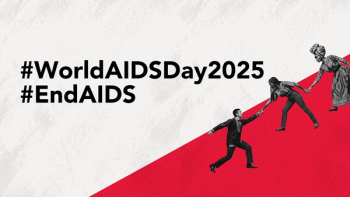
COVID-19 Mortality by Race and Ethnicity in the US: Have Disparities Really Decreased?
Decreased racial and ethnic disparities in COVID-19 mortalities between the first and Omicron waves of the pandemic could be explained by increased deaths in non-Hispanic White adults and changes in the geographic spread of the pandemic.
There has been extensive research into racial and ethnic disparities in COVID-19 mortalities in the US.
In 2020, Hispanic and non-Hispanic Black Americans experienced COVID-19 mortalities that were disproportionately higher than those of non-Hispanic White Americans. However, these disparities lessened in 2021.
A new
The study authors wanted to assess whether national decreases in racial and ethnic COVID-19 mortality disparities between the original pandemic wave and the Omicron wave actually reflect mortality decreases, or if the lowered disparity was due to other factors.
The cross-sectional study utilized data from the US Centers for Disease Control and Prevention (CDC) on COVID-19 deaths from March 1, 2020-February 28, 2022. Included mortalities occurred in adults 25 years and older who resided in the US.
The investigators compared the COVID-19 deaths by race and ethnicity across metropolitan and nonmetropolitan areas. They analyzed the decrease in racial and ethnic COVID-19 mortality disparities between the initial and Omicron waves. The primary study outcome was age-standardized death rates.
During the March 1, 2020-February 28, 2022 study period, there were 977018 death certificates for US adults that mentioned COVID-19. The mortalities averaged 73.6 years of age, 44.6% female, 16.1% Hispanic, 14.4% non-Hispanic Black, and 64.4% non-Hispanic White. In the initial wave of the COVID-19 pandemic, the proportion of COVID-19 deaths in adults living in nonmetropolitan areas rose from 5944 of 110526 deaths (5.4%) to a peak of 40360 of 172515 deaths (23.4%) during the Delta wave. During the Omicron wave, this proportion was 45183 of 210554 deaths (21.5%).
The US disparity in age-standardized COVID-19 deaths for non-Hispanic Black adults, compared to non-Hispanic White adults, decreased from 339 to 45 deaths per 100000 person-years from the pandemic outbreak to the Omicron wave.
These results initially suggested that racial and ethnic disparities in COVID-19 mortality decreased nationally for some groups in the first 2 years of the COVID-19 pandemic. However, this decrease could be attributed to increased mortalities in non-Hispanic White adults and changes in pandemic geography.
After standardizing the results for age, racial, and ethnic differences by metropolitan versus nonmetropolitan residence, increased mortality rates in non-Hispanic White adults accounted for 120 deaths per 100000 person-years of the decrease (40.7%). Shifts in mortality to nonmetropolitan areas accounted for 58 deaths per 100000 person-years, for a 19.6% decrease. This can be explained by a disproportionately high number of non-Hispanic White Americans living in nonmetropolitan areas.
The remaining 116 deaths per 100000 person-years in the 39.6% decrease were explained by decreased death rates in non-Hispanic Black adults.
The investigators concluded that most of the decrease in racial and ethnic disparities in COVID-19 mortalities between the first and Omicron waves of the pandemic could be explained by increased deaths in non-Hispanic White adults and changes in the geographic spread of the pandemic. “These findings suggest that despite media reports of a decline in disparities, there is a continued need to prioritize racial health equity in the pandemic response,” the study authors wrote.
Newsletter
Stay ahead of emerging infectious disease threats with expert insights and breaking research. Subscribe now to get updates delivered straight to your inbox.

















































































































































































































































































